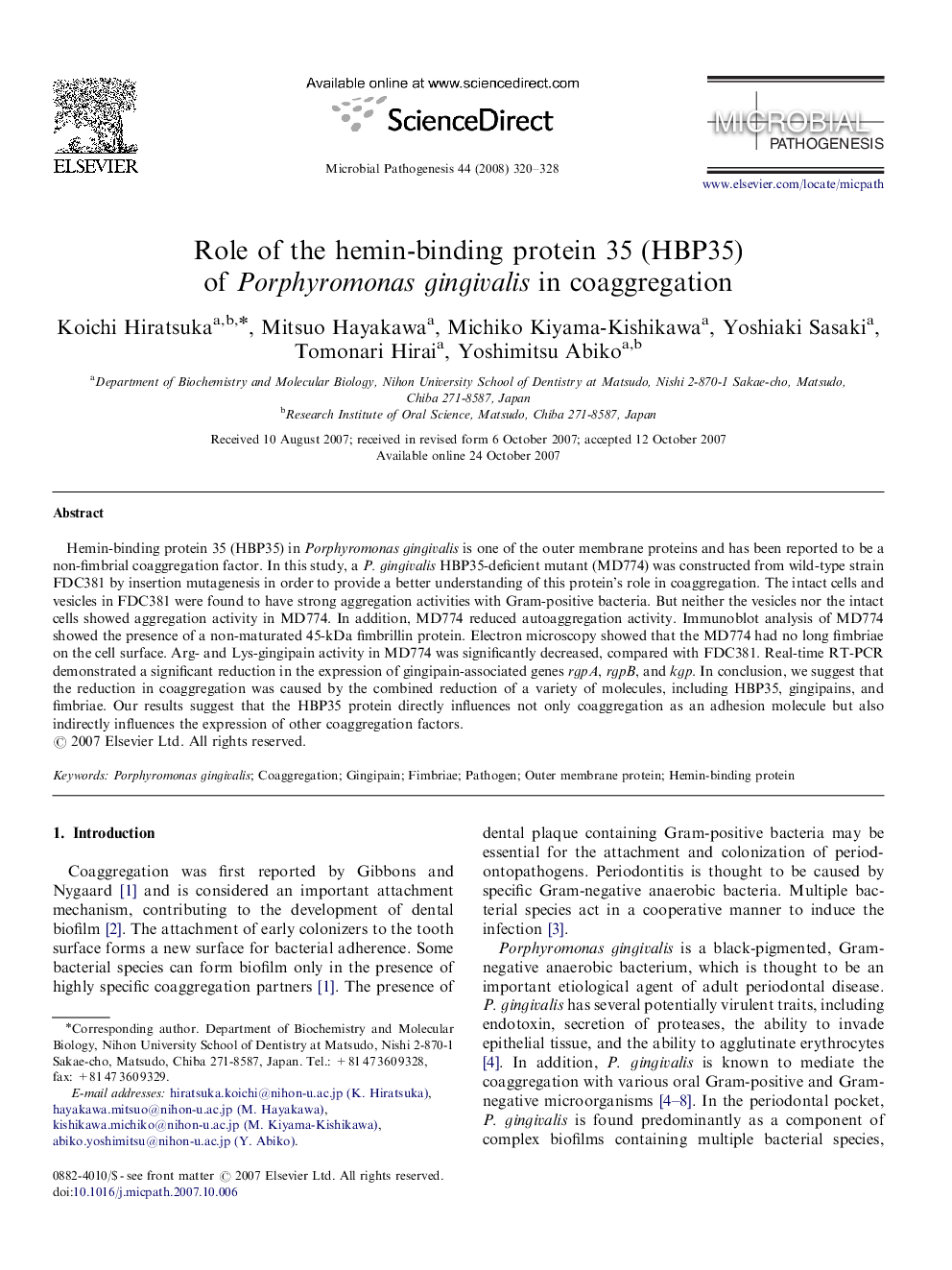| Article ID | Journal | Published Year | Pages | File Type |
|---|---|---|---|---|
| 3417125 | Microbial Pathogenesis | 2008 | 9 Pages |
Hemin-binding protein 35 (HBP35) in Porphyromonas gingivalis is one of the outer membrane proteins and has been reported to be a non-fimbrial coaggregation factor. In this study, a P. gingivalis HBP35-deficient mutant (MD774) was constructed from wild-type strain FDC381 by insertion mutagenesis in order to provide a better understanding of this protein's role in coaggregation. The intact cells and vesicles in FDC381 were found to have strong aggregation activities with Gram-positive bacteria. But neither the vesicles nor the intact cells showed aggregation activity in MD774. In addition, MD774 reduced autoaggregation activity. Immunoblot analysis of MD774 showed the presence of a non-maturated 45-kDa fimbrillin protein. Electron microscopy showed that the MD774 had no long fimbriae on the cell surface. Arg- and Lys-gingipain activity in MD774 was significantly decreased, compared with FDC381. Real-time RT-PCR demonstrated a significant reduction in the expression of gingipain-associated genes rgpA, rgpB, and kgp. In conclusion, we suggest that the reduction in coaggregation was caused by the combined reduction of a variety of molecules, including HBP35, gingipains, and fimbriae. Our results suggest that the HBP35 protein directly influences not only coaggregation as an adhesion molecule but also indirectly influences the expression of other coaggregation factors.
